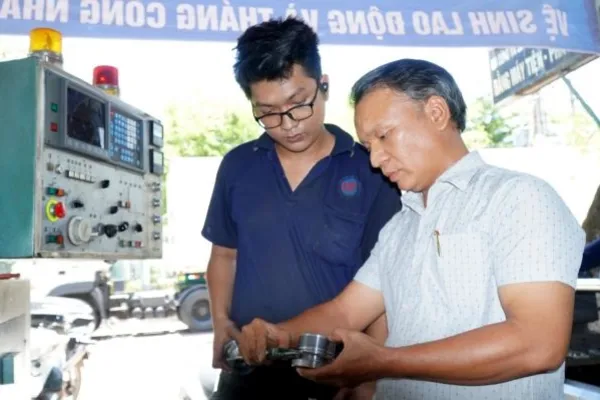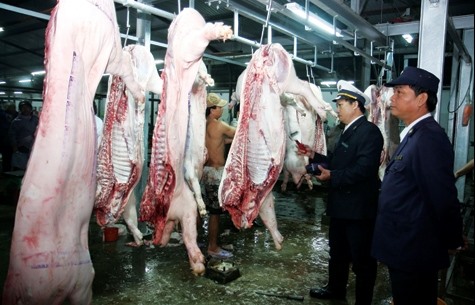 Society
Society

The municipal authorities of Hà Nội put plans in motion to control poultry and cattle slaughter activities by setting up modern industrial-scale houses last year.
 |
| Hà Nội has 1,070 animal slaughterhouses, of which 1,048 are traditional family-sized houses, 15 are semi-industrial-scaled units, and only 7 are industrial-scaled units.– Photo vietnammoi.vn |
HÀ NỘI – The municipal authorities of Hà Nội put plans in motion to control poultry and cattle slaughter activities by setting up modern industrial-scale houses last year. However, slaughter practices remain dominated by traditional slaughterhouses, reported the Hà Nội Mới (New Hà Nội) newspaper.
Summer is coming, and meat slaughtering will be a concern along with issues of environmental pollution and food safety.
According to the Hà Nội Veterinary Department, the city has 1,070 animal slaughterhouses, of which 1,048 are traditional family-sized houses, 15 are semi-industrial-scaled units, and only 7 are industrial-scaled units.
Notably, only 168 family-sized slaughterhouses were granted licences.
The municipal authority has set a plan for animal slaughter activities by the year 2020, with the goal of having 11 industrial-scaled slaughterhouses accounting for 60-65 per cent of total animal meat produced for the city. By the end of last year, however, there were only 7 industrial-scale ones, reaching just 17 per cent of designed capacity.
In fact, the number of industrial-scale slaughterhouses was modest and were operating ineffectively.
By late last year, three of the 7 industrial-scale slaughterhouses had stopped operating altogether, reported the department.
While semi-industrial and industrial-scale slaughter activities had been ineffectively operating, the activity of traditional family-owned slaughterhouses was active. Many were set up in residential areas of districts.
Notably, they were not located in fixed places, and often operating randomly, making it difficult for inspection and monitoring of hygiene and food safety.
Currently, Chương Mỹ District has the biggest poultry and cattle herd of the city. However, the district does not have any industrial-scale slaughterhouses. It has 67 smaller scale operations scattered around the communes.
Many violated regulations on food safety and environmental pollution.
A house in Phụng Châu Commune is a good example. The unit was operational from 2004 and butchered 600 pigs a day, but was shut down for seriously violating food safety regulations, and causing environmental pollution.
Thanh Trì District is home to a number of family run slaughterhouses, which discharge waste water into canals and sewers, making them a rising concern among local people.
“Policies supporting activities of butchering, trading and transporting poultries and cattle are not effective”, said Phạm Thị Hiền, director of Minh Hiền Food Company in Thanh Oai District.
“Besides this, low awareness and the engrained habits of customers who still accept meat products butchered in an unhygienic environment account for the continued existence of traditional slaughterhouses”, she told the paper.
New measures are needed to properly control the safety of meat products from these slaughterhouses. We must also promote modern alternatives.
Nguyễn Ngọc Sơn, director of the Hà Nội Veterinary Department, said: “Instructions are needed for defining the origins of live animals and meat products being traded in the city”.
"On top of this, relevant sectors should consult the municipal authorities to set up policies supporting traditional and small-scale slaughterhouses in renovating their butchering facilities, waste water treatment systems, and vehicles to transport meat products so as to ensure food safety an hygiene," Sơn said.
To expand modern and industrial-scale slaughterhouses, the city should consider incentives on leasing land, soft loans, technology application and branding activities to help slaughter practices be more stable as well as better managed, he said. – VNS




